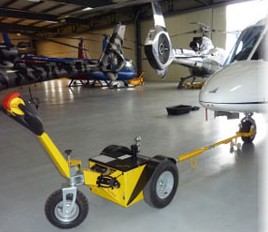
Moving Crude
Once the crude is extracted from the ground it’s pumped into huge containers called floating roof tanks that hold approximately 2.7 million gallons of crude oil each. Depending on where the nearest railway is you may be able to load directly into rail cars. But more than likely you will first have to load the crude into a tanker truck which will then transport the oil to the railway.
The tanker trucks are filled by extracting oil from the storage tanks until the truck is full. Then the driver takes the truck to the nearest terminal where a rail spur has been built to allow the rail cars to get to the terminal and then back to the railway. Using rail cars to carry product is so last century but it is still the best and most consistently effective way to transport many goods including crude oil. The transloading process happens at the terminal. The term “transloading” means to transfer a shipment from one mode of transportation to another. The term is used when one transportation mode, in this case the tank trucks, cannot be used for the entire trip. So product will be transloaded from the trucks into approximately 120 rail cars.
The Terminal
In order to transload the crude oil, a terminal must be constructed and stocked with the proper equipment to get
the job done quickly and efficiently but it also has to take employees safety into account. The main caveat here is to watch for falls from heights as workers climb around on large pieces of equipment. The terminal must be built to OSHA safety guidelines by experienced engineers so workers are protected at all times and their productivity is not compromised in a properly integrated terminal.
Elements that create a safe and productive terminal include:
- Crude oil loading racks with fixed platforms that allow access to multiple vehicles or multiple hatches at once.
- Single or double-sided loading racks for safe access to a variety of trucks and rail cars.
- Portable tank truck access system with fall prevention cage.
- Mobile transloading carts for quick access.
- Guardrail systems are a must for safe access to the
tops of railcars. - Tracking gangway systems.
- Truck and rail safety cages.
- Rail enclosures that surround the crash box rail aswell as full rail car enclosures.
- Mobile dual vehicle access systems with access gangways and fall prevention cages to access the tops of vehicles. Hoses are then connected to both vehicles to transfer product.
- Loading and unloading skid systems with meters, pumps, valves, filtration, instrumentation, grounding, high-level shut off and ticket printer systems.
- Top and bottom loading arms with a wide range of valves, fittings, and instrumentation equipment for
leak free operation in most situations. - A metering system can measure how much oil you are moving at any given time.
Spill Containment
Before a railcar ever enters the terminal for the first time there should be spill containment in place. A spill
usually happens when a seal fails during loading or unloading, but you should be prepared at all times.
Spill containment track pans hold drips, leaks and spills and meet the required environmental spill contamination regulations. The crude oil is contained quickly so there’s no damage to the environment. Most
track pans are either steel or fiberglass.
On The Road Again
Once all the crude oil has been transloaded onto the
group of rail cars, it is ready to begin the long trip to St. James, Louisiana or any number of other southern
locales where it will be transloaded once again at a refinery.








